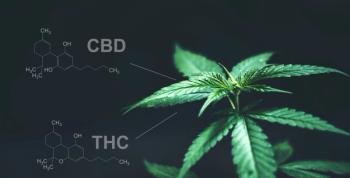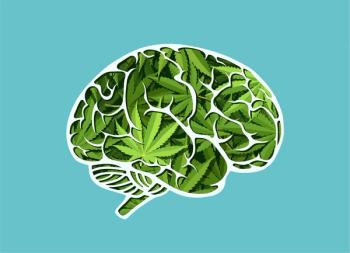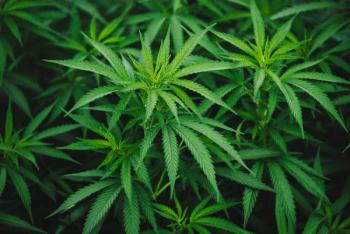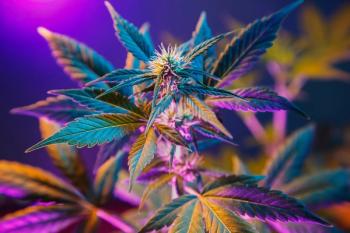
- August 2021
- Volume 2
- Issue 2
Do No Harm—The Work of Medical Cannabis to Treat Epilepsy: How One Physician Found a New Treatment that Works and Upholds the Oath She Took
Dr. Bonni Goldstein discusses her observations about how cannabis can “move the brain forward,” explaining how she has seen it help some of her worst seizure disorder patients who had severe developmental delays begin to advance developmentally while using cannabis medicine.
Dr. Bonni Goldstein, a leading medical cannabis doctor, advocate, and researcher, discusses her journey into treating patients with cannabis and cannabidiol (CBD). Here, Dr. Goldstein discusses her observations about how cannabis can “move the brain forward,” explaining how she has seen it help some of her worst seizure disorder patients who had severe developmental delays begin to advance developmentally while using cannabis medicine. Dr. Goldstein also discusses the many studies she has worked on as part of her personal and passionate mission to normalize the use of cannabis for novel medical treatments.
“I will respect the hard-won scientific gains of those physicians in whose steps I walk, and gladly share such knowledge as is mine with those who are to follow. I will remember that there is art to medicine as well as science, and that warmth, sympathy, and understanding may outweigh the surgeon’s knife or the chemist’s drug” (1). That is the modern version of the Hippocratic Oath as written in 1964 by Louis Lasagna, academic dean of the School of Medicine at Tufts University, and used in many medical schools today.
A version of the basic tenet of the oath—to first, do no harm (or primum non nocere, the Latin translation from the original Greek)—is sworn to by all physicians in the US, including
Dr. Bonni Goldstein, medical director of Canna-Centers, a California-based medical practice created to educate patients about the use of cannabis for serious and chronic medical conditions.
But this famous quote actually isn’t a part of the Hippocratic Oath at all. It is from another of Hippocrates’ works called “Of the Epidemics” (2). The actual interpretation of the oath is that doctors should help their patients as much as they can by recommending tests or treatments for which the potential benefits outweigh the risks of harm.
And that particular interpretation perfectly aligns with the work that Dr. Goldstein does with her medical cannabis patients.
Taking the Leap
Dr. Goldstein is something of an enigma in the field of cannabis medicine, evaluating both adult and pediatric patients for use of medical cannabis (3). She has become deeply committed to promoting and exploring the use of medical cannabis.
She has given numerous lectures to many patient support programs, including Cancer Support Community, and various pediatric epilepsy and autism non-profits. She has also lectured at the yearly CannMed conferences, Patients Out of Time conferences, and Cannabis Science Conferences.
She is on the board of the International Association of Cannabis as Medicine, a member of the Society of Cannabis Clinicians, and a member of the Policy Advisory Committee for Americans for Safe Access.
But as Dr. Goldstein has discovered, using cannabis to bring healing to her patients is more than just following the tenets of the oath she swore to. It’s about the perceptions she has to deal with among her doubting colleagues.
“I share my clinical experience in order to try to open up the minds of those who are still dubious about the therapeutic potential of cannabis,” Goldstein said. “Physicians aren’t always convinced by a patient’s experience. But hopefully hearing the collective experience of a well-trained, fairly conservative physician who has been in the field for over a decade will help change opinions.”
Her immersion into this growing niche of medicine began in 2007 when she took a leave of absence after years of working the night shift in pediatric emergency medicine. A friend of hers who was ill asked her about medical cannabis. “I knew nothing at the time,” Dr. Goldstein said. “I did some research for my friend and found numerous reports of medicinal benefits in the scientific literature. I was so intrigued by the science that I started working part-time in a medical cannabis practice in 2008, where I met many patients who found cannabis to be the answer to their medical problems.”
Seeing the Light
Then a real-life “aha” moment that changed everything for Dr. Goldstein happened in 2013. CNN aired the documentary “Weed” featuring Dr. Sanjay Gupta (4) that highlighted the story of a Charlotte Figi, a five year old Colorado Springs girl who had been suffering from Dravet Syndrome since she was three (5).
Dravet Syndrome is a rare, severe form of intractable epilepsy not controlled by medication (6). Charlotte was having 300 grand mal seizures a week. Doctors had no answers, no help for the family as they witnessed their child deteriorate. They told her parents, Paige and Matt, to say their goodbyes.
That’s when the Figis decided to try some cannabidiol (CBD) oil they got from a local Denver dispensary.
The results were dramatic. Within a year, Charlotte’s seizures slowed to 2-3 times a month. (Editor's note: read more about Charlotte Figi and her family on page 12 in this issue.)
After the CNN documentary aired, Goldstein said, her office was “inundated with requests from parents of children with intractable seizures asking for help with cannabis and CBD.”
“Interestingly, at that time there were no CBD products readily available in California, and the Colorado company mentioned in the documentary had a long waiting list," she said. "So, I was able to approve these ill children to use medical cannabis. But the parents initially had a very hard time finding any CBD products.”
In early 2014, Goldstein said, a number of companies focused on producing CBD preparations for pediatric use, and her patients were able to start trying CBD. “One of my first pediatric epilepsy patients, who I first saw at the age of four years old, is now turning 11 and has had over 99% reduction of seizures with CBD,” Dr. Goldstein said. “It took some time but now he is thriving at school and at home with a fantastic quality of life.”
What She Has Learned
One of the biggest surprises she has seen in treating patients with cannabis is how it can help to move the brain forward in so many cases. “What I mean by this is that some of my patients with the worst seizure disorders who have experienced severe developmental delays begin to advance developmentally while using cannabis medicine,” she said. “For example, I have a young adult in my practice who began speaking in sentences at the age of 24. She struggled her whole life with seizures and once we were able to get the seizures under control with cannabis, she went from using one word at a time to putting words together to form sentences.”
Another one of her patients with seizures who had not been able to read and write by the age of 9, learned to read and write while using cannabis. Yet another child with developmental delay who suffered multiple strokes at birth began to speak spontaneously at the age of 6 while on CBD and cannabigerol (CBG) (7).
“These are only a few of the many examples that show cannabis is not detrimental to the brain when used as medicine,” Dr. Goldstein said.
If it appears that the child will benefit from cannabis,
Dr. Goldstein makes recommendations on cannabinoids and dosing. “I guide them every step of the way as there is no standard protocol for cannabis medicine,” she said. “Each person responds uniquely to the various cannabinoids at different doses, and the medical course must take into account someone’s response.”
The Endocannabinoid System and Seizures
Dr. Goldstein said that people with seizure disorders appear to have an underlying endocannabinoid system dysfunction that can lead to neuroexcitation, which is the over-firing of neurons, leading to seizures. The endocannabinoid system is a widespread neuro-modulatory system that plays important roles in central nervous system development (8).
CBD and other cannabinoids are thought to be effective for treating seizures due to “polypharmacologic properties,” meaning they have many different targets of action within the brain, all leading to a reduction of neuroexcitation.
Dr. Goldstein explained that it is known that CBD has a very wide therapeutic range, meaning some people may respond to a low dose, such as 20 mg, and others may require 800 mg or more per day. “The only way to find an anti-epileptic dose of CBD is to start at a low dose and increase over a period of months, looking for the desired effects.”
The use of other anti-epileptic medications, which can interact with CBD, can complicate the course for these patients, requiring close follow-up, said Dr. Goldstein.
What Science Is Not Seeing
While she has seen firsthand the benefits of cannabis as medicine in her pediatrics work (9), there is still much that the medical science world does not see.
“There is absolutely still a stigma within the medical community in regards to cannabis,” she said, a truism that has dogged cannabis practitioners and researchers alike for years. “Remember that the majority of scientific studies that came out between the 1970s and 1990s reported on the detrimental effects, leading physicians to regard cannabis as a drug of abuse. It is this brainwashing that we must overcome with education and research.”
Goldstein is currently working with a company that is doing research on how cannabinoids may benefit children with autism (10) by looking at numerous biomarkers. “We are studying how cannabis may correct the physiologic imbalances of children with autism who are being treated with cannabis, and should be publishing our results by end of 2021.”
While Dr. Goldstein is a believer in what cannabis can do for patients, seeking to do the best she can for her patients as her Hippocratic Oath demands, she is seeing a sort of evolution of thinking about cannabis coming from patients that is beginning to influence their doctors. “I don’t think any doctor anywhere has not been asked about medical cannabis,” she said. “In order to have a proper conversation with patients, it is incumbent on physicians to, at minimum, understand the endocannabinoid system and the plant compounds and how they interact to impact human health.”
Working to Build Awareness
Dr. Goldstein is a popular speaker on the medical cannabis trade show and special event circuit, sharing her story about the discovery of cannabis as a treatment for many human maladies, and her excitement about the future of cannabis as medicine.
She is also the author of Cannabis is Medicine - How Medical Cannabis and CBD Are Healing Everything from Anxiety to Chronic Pain, released in September 2020, and revised from her self-published book in 2016. It is described by Amazon as a book that “explains the current state of scientific research on how cannabis interacts with human physiology to create balance, leading to good health” (11).
“The idea of writing a book came about from an interaction with a chronically ill patient who was very curious about how cannabis was helping him,” she said. “In our appointments, he was more interested in asking me about the science rather than talking about his medical condition. He asked me where he could get the information I was sharing with him.
“What I hope people will take away from the book is a basic understanding of the endocannabinoid system and how the various compounds from the cannabis plant can interact with the human brain and body to provide beneficial medicinal effects.”
Conclusion
Despite all of the propaganda against cannabis, Dr. Goldstein finds it to be a very safe and efficacious medicine, especially when used under medical supervision. “Hopefully my book helps people get away from the nonsense of ‘Reefer Madness (12),’ and promotes using science to help inform them rather than propaganda,” she said.
Asked what she would like to see happen in the medical cannabis research field in the next 2-5 years, she responded enthusiastically: “Deschedule so that meaningful research can move forward!”
References
https://www.pbs.org/wgbh/nova/article/hippocratic-oath-today/ .https://www.health.harvard.edu/blog/first-do-no-harm-201510138421 .http://www.bonnigoldsteinmd.com .https://www.cnn.com/2013/08/08/health/gupta changed-mind-marijuana/index.html .https://www.cnn.com/2013/08/07/health/charlotte-child-medical-marijuana/index.html .https://www.epilepsy.com/learn/types-epilepsy-syndromes/dravet-syndrome .https://www.health.com/mind-body/cbd/best-cbg-oil .https://www.ncbi.nlm.nih.gov/pmc/articles/PMC4789136/ .http://www.bonnigoldsteinmd.com/cannabis-for-pediatric-epilepsy/ .https://www.ncbi.nlm.nih.gov/pmc/articles/PMC7759327/ .https://www.amazon.com/Cannabis-Medicine-Medical-Healing-Everything/dp/031650078X .https://www.imdb.com/title/tt0028346/ .
Articles in this issue
over 4 years ago
August 2021 Digital Editionover 4 years ago
Medical Cannabis and Caregiver Rights in Hawaiiover 4 years ago
Charlotte Figi: Patient, Advocate, Trailblazer, and Much Moreover 4 years ago
Cannabis Becomes One Nurse’s Tool to Treat Epilepsy DisordersNewsletter
Unlock the latest breakthroughs in cannabis science—subscribe now to get expert insights, research, and industry updates delivered to your inbox.





